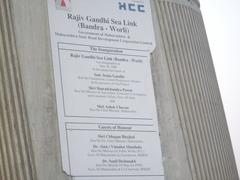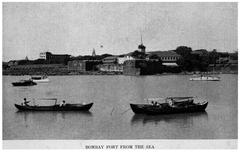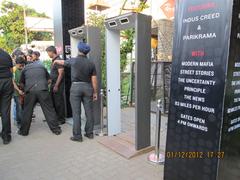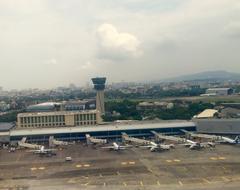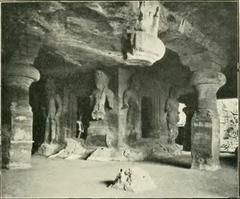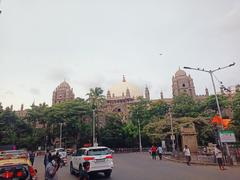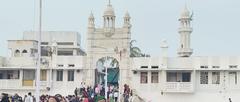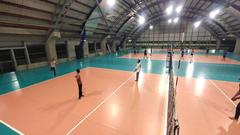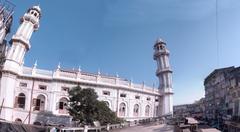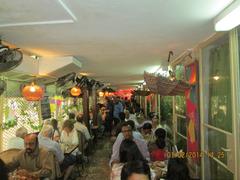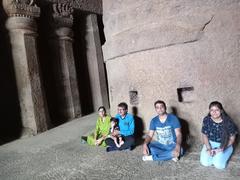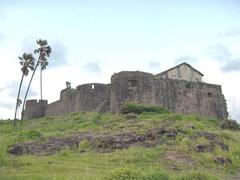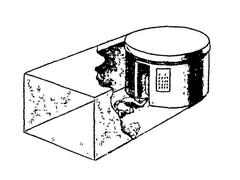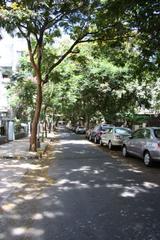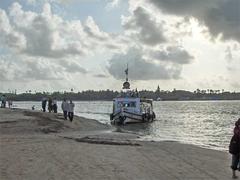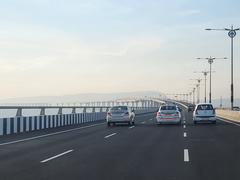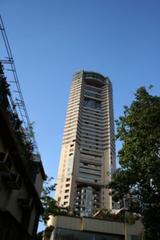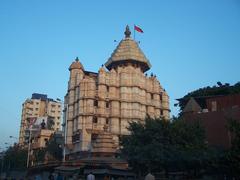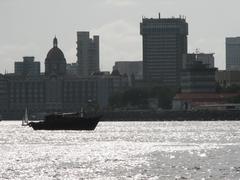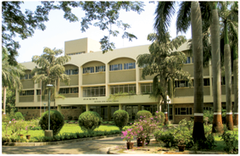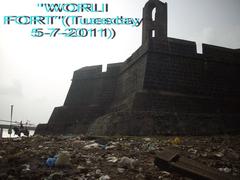Jinnah People’s Memorial Hall Mumbai: Visiting Hours, Tickets, and History
Date: 04/07/2025
Introduction
Jinnah People’s Memorial Hall in Mumbai is a crucial yet often overlooked monument that stands at the crossroads of architecture, history, and politics. Conceived in 1918 through a grassroots campaign led by Muhammad Ali Jinnah, the hall commemorates his leadership during India’s struggle for self-rule and communal harmony (Heritage Times). Located near Lamington Road in the Indian National Congress compound, the hall is a testament to Mumbai’s pluralistic ethos and the dynamic narratives that shaped the freedom movement (Open Magazine; The Hindu).
Blending Indo-Saracenic and Edwardian architectural styles, the hall’s design symbolizes the cosmopolitan identity of colonial Bombay (Mumbai Heritage; Dawn). Over the decades, it has served as a hub for political debate, cultural gatherings, and communal dialogues, hosting leaders like Gandhi, Nehru, and Jinnah himself (Frontline; Times of India). Today, visitors can explore its historical significance, architectural beauty, and proximity to other heritage sites in South Mumbai.
Table of Contents
- Origins and Construction
- Historical and Political Significance
- Architectural Features and Location
- Role in Mumbai’s Political and Social Life
- Visiting Information
- Decline and Present Condition
- Legacy and Historical Memory
- Frequently Asked Questions (FAQ)
- Tips for Visitors
- Conclusion
- References
Origins and Construction
The creation of Jinnah People’s Memorial Hall was inspired by a pivotal event in December 1918, when Jinnah led a protest against a proposed memorial for the British Governor of Bombay, Lord Willingdon (Heritage Times). Jinnah’s campaign, which emphasized that such honors should be reserved for popular leaders, resonated with Bombay’s citizens. Approximately ₹65,000 was raised—mostly through small individual contributions—to fund a new hall celebrating Jinnah’s leadership (Open Magazine). The project was realized with the involvement of the Shapoorji Pallonji group, and the foundation stone was laid by Jinnah himself (Mumbai Heritage; The Hindu).
Historical and Political Significance
Jinnah People’s Memorial Hall quickly became a focal point for Bombay’s political activism. It hosted key sessions of the Indian National Congress and the All-India Muslim League, serving as a venue for debates on communal harmony, minority rights, and constitutional reforms (Frontline). Its walls echo the voices of leaders like Gandhi, Nehru, and Patel, who addressed gatherings shaping India’s freedom struggle. The hall symbolizes not just Jinnah’s influence, but also Mumbai’s role as a crucible for nationalist movements (Times of India; Indian Express).
Architectural Features and Location
Jinnah People’s Memorial Hall is a striking example of early 20th-century Mumbai architecture. Its façade blends Indo-Saracenic, Islamic, Hindu, and Gothic elements—a visual articulation of Bombay’s cosmopolitan heritage (Mumbai Heritage; Dawn). The building was designed for large gatherings, with high ceilings, arched windows, and intricate detailing. Inside, the main assembly hall once accommodated up to 1,000 people, making it ideal for public meetings and cultural events.
Strategically located near Lamington Road in the Indian National Congress compound, the hall is surrounded by other heritage sites, bustling markets, and vibrant neighborhoods. It is easily accessible from key transit points like Chhatrapati Shivaji Maharaj Terminus (CSMT) and Marine Lines station.
Role in Mumbai’s Political and Social Life
Throughout the 20th century, Jinnah People’s Memorial Hall served as a vital hub for political and cultural events. It was a venue for major Congress and Muslim League sessions, public debates, literary festivals, and art exhibitions (Mumbai Heritage). After independence and partition, the hall’s function evolved, but it continued to host community gatherings and social functions (Open Magazine).
The hall’s legacy is intertwined with moments of communal unity and later, with the complexities of partition and debates about Jinnah’s place in Indian memory (NDTV; Scroll.in).
Visiting Information
Visiting Hours
- General Hours: 10:00 AM to 5:00 PM, Tuesday–Sunday
- Closed: Mondays and public holidays
- Note: Hours may vary depending on special events or maintenance; it is advisable to check with local tourism offices or heritage organizations before visiting.
Tickets and Entry
- Entry Fee: Free for general admission. Select events or exhibitions may require a nominal fee or advance registration.
- Booking: Group or educational visits should be arranged in advance with the managing trust or local heritage organizations.
Accessibility
- Wheelchair Access: Basic ramps at the main entrance. Some interior areas may be less accessible due to the building’s age.
- Facilities: Restrooms and seating available. No on-site café or gift shop.
Getting There
- Address: Near Lamington Road, Indian National Congress compound, Mumbai.
- By Train: Closest stations are Chhatrapati Shivaji Maharaj Terminus (CSMT) and Marine Lines (both within 1.5 km).
- By Bus/Taxi: Easily reachable via city buses, taxis, and ride-share services.
- Parking: Limited; public transport is recommended.
Nearby Heritage Sites
- Chhatrapati Shivaji Maharaj Terminus (CSMT)
- Bombay High Court
- Asiatic Society Library
- Dr. Bhau Daji Lad Museum (in Byculla)
- Gateway of India (short drive away)
Special Events and Tours
- Heritage Walks: Local historical societies and guides occasionally include the hall on heritage walking tours (Mumbai Heritage Walks).
- Events: Occasional lectures, cultural programs, and community gatherings. Check local listings or contact the hall’s managing trust for details.
Photography
- Permitted: Exterior photography is generally allowed. Interior photography may be restricted during events—always ask for permission.
Decline and Present Condition
Despite its historical importance, Jinnah People’s Memorial Hall has faced decades of neglect. Reports indicate visible structural deterioration, including peeling paint, moisture damage, and missing commemorative plaques (Open Magazine; Dawn). Restoration has been sporadic, and portions of the hall are not accessible to the public. However, the surrounding Congress House compound remains active, inhabited by descendants of freedom movement activists.
Legacy and Historical Memory
The hall’s legacy is complex. It stands as a monument to Jinnah’s early advocacy for Indian nationalism and communal harmony while also symbolizing Mumbai’s layered pluralistic identity (Frontline). The building has been at the center of debates over historical memory, with periodic controversies regarding its name and purpose (NDTV; Scroll.in). Its continued presence challenges simplified narratives about partition and highlights the city’s openness to dialogue and diversity.
Frequently Asked Questions (FAQ)
Q: What are the visiting hours of Jinnah People’s Memorial Hall?
A: 10:00 AM to 5:00 PM, Tuesday through Sunday; closed on Mondays and public holidays.
Q: Is there an entry fee?
A: Entry is generally free; some events may require a nominal fee.
Q: How do I reach the hall by public transport?
A: The nearest railway stations are CSMT and Marine Lines. The hall is accessible by bus, taxi, or ride-sharing services.
Q: Is the hall wheelchair accessible?
A: Basic accessibility features exist, but some areas may be difficult to access due to age and condition.
Q: Are guided tours available?
A: Occasionally—check with local heritage groups (Mumbai Heritage Walks).
Tips for Visitors
- Check access in advance: Due to its current condition and limited promotion, verify with local organizations before planning your visit.
- Combine with other heritage sites: The hall is close to several important Mumbai landmarks, making it ideal for heritage walks.
- Respect the site: Be mindful of the hall’s historical and political significance.
- Best time to visit: November to February offers the most comfortable weather for exploring Mumbai’s outdoor sites.
- Support local conservation: Engage with or donate to Mumbai’s heritage organizations to support preservation efforts.
Conclusion
Jinnah People’s Memorial Hall is a vital remnant of Mumbai’s rich political history and a symbol of the city’s enduring commitment to diversity and dialogue. Although restoration is needed, the hall continues to offer a meaningful experience for those seeking to understand India’s freedom movement and Mumbai’s cosmopolitan legacy. Plan your visit in advance and consider joining heritage walks or tours for enhanced context.
For updated heritage guides and event news, download the Audiala app and follow us on social media.
References
- Hundred Years of Jinnah’s Protest at Bombay Town Hall (Heritage Times)
- The Mujra Mark (Open Magazine)
- Jinnah Hall Stands Tall (The Hindu)
- The Nation Article on Jinnah Hall (Frontline)
- The Jinnah Hall Controversy (Mumbai Mirror)
- Jinnah Hall Mumbai Controversy (Indian Express)
- Jinnah Hall Mumbai (Mumbai Heritage)
- Jinnah Hall Mumbai Controversy (NDTV)
- Mumbai Heritage Conservation Committee (Mumbai Heritage Conservation Committee)
- Jinnah Hall Mumbai Controversy (Scroll.in)
- Visiting Jinnah’s People’s Memorial Hall (Third Eye Traveller)
- Jinnah’s People’s Memorial Hall Architecture (Dawn)
- Mumbai Heritage Walks (Mumbai Heritage Walks)
